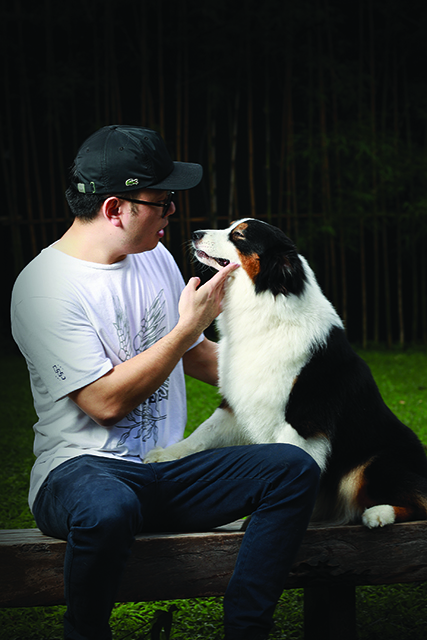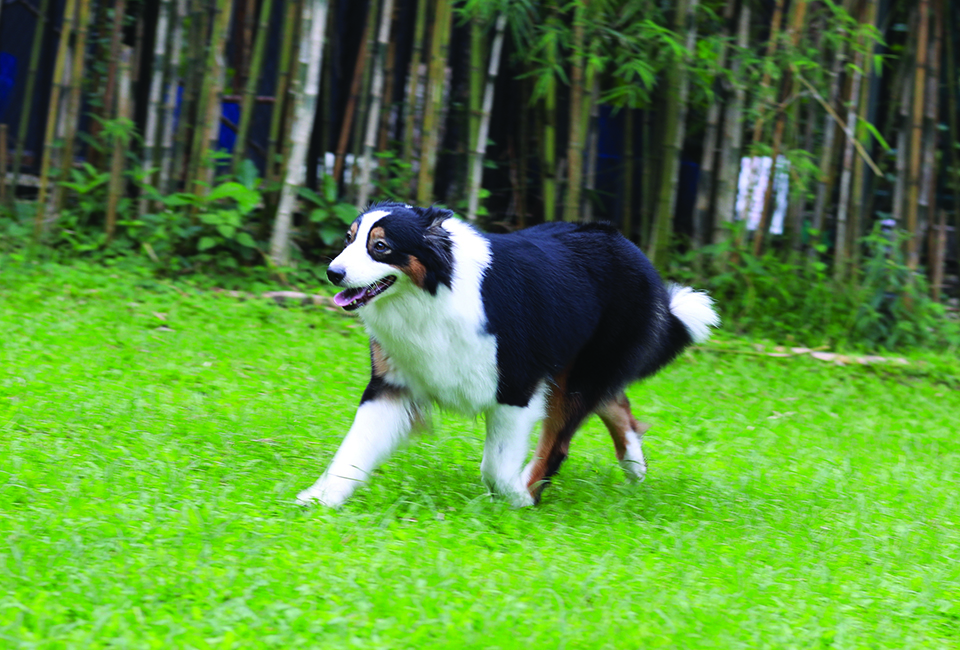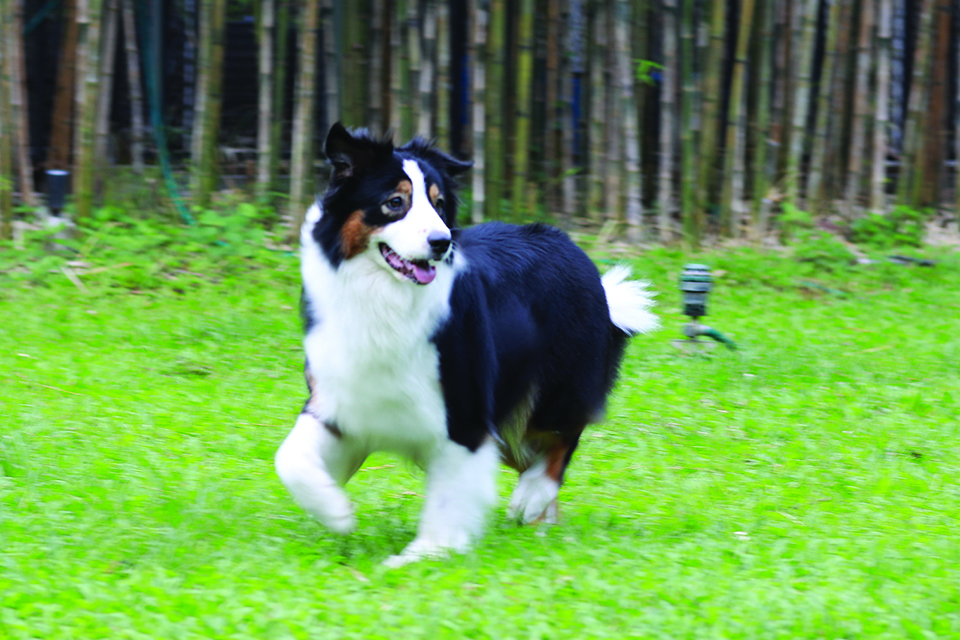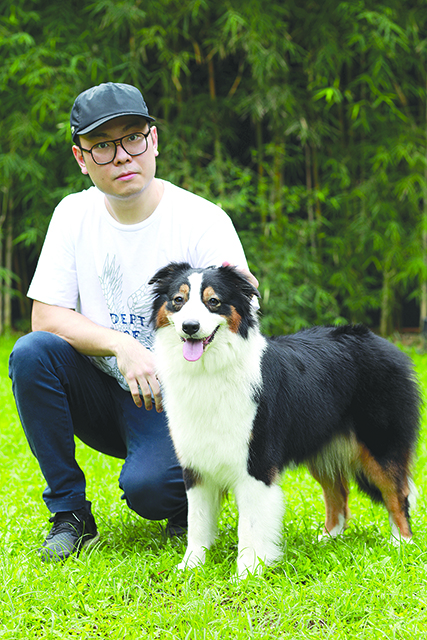Photos by JEFFREY C. LIM

Australian Shepherds (Aussies) – deemed the “cowboy’s herding dog of choice” – have an irresistible impulse to herd as they descended from a line of Europe’s finest herders, but that doesn’t mean herding is the only thing that they can do and the only quality that makes them stand out. As a matter of fact, many human companions love Aussies for their numerous positive qualities, including intelligence, loyalty, sweetness, guarding instincts, and strong stamina.Story
ARE THEY REALLY FROM AUSTRALIA?
According to the American Kennel Club, Aussies originated from Europe, near the Pyrenees Mountains. In the borderlands between France and Spain, indigenous people Basques built their centuries-old reputation as world-class shepherds — with Pyrenean Shepherd, progenitor of the modern Aussie, as their dog of choice.
In the early 1800s, Australia’s Anglo émigrés looked for rich pastureland for cattle ranching, with many Basques sailing east with their Pyrenean Shepherds to try their luck on the virgin Australian continent. During their journey in Australia, Basque shepherds found many ways to refine their herding dogs until they set sail for California.
Californian ranchers, who admired Basques’ herding dogs, assumed the dogs were Australian, resulting in the misleading name Australian Shepherd. Since then, Aussies have been an iconic part of cowboy culture.

HOWDY, PARTNER!
Animal Scene interviewed Myles Hontiveros, the human companion of an Australian Shepherd named Hottie. He shared with us what it’s like to live with a “cowboy’s herding dog,” and how to take care of them to ensure they have a long and happy life.
Myles used to focus only on Shiba Inus until another dog lover introduced him to Australian Shepherds, and he immediately fell in love with them. Six months later, he looked for Aussies he could add to his family until he finally met Hottie in Hungary and adopted her when she was 10 months old.

MISS CONGENIALITY
Myles fell in love with Hottie’s temperament and other characteristics when he got her more than a year ago.
“I am very happy with Hottie. She is clingy and very sweet, but she does give me space. When she sees me sleeping, she won’t disturb me. When I’m talking to someone, she just stays near me. After my conversation, that’s when she approaches me and plays with me,” Myles said.“
She’s very clingy and affectionate. She approaches you immediately when you call her. When I’m in the province, I bring her without a leash. She’s like a Golden Retriever or Labrador because she’s very friendly and sweet, which is why she always sleeps beside me and it’s easy to build trust.”

THEY’RE CALLED HERDING DOGS FOR A REASON
As herding dogs, it’s not surprising that Aussies are intelligent and easy to communicate with. Myles said it took only two to three days to potty-train Hottie because she’s smart.
“Australian Shepherds are herding dogs. They usually herd ducks, sheep, goat, etc. They are known to be hardworking dogs,” Myles said.
“[Aussies] are very sweet and intelligent dogs. They listen to you, and they are easy to train. They understand your emotions so much like when you’re angry or happy with them.”

THE PERFECT FUR-SIBLING
Adjustment periods are usually difficult, especially if you have other companion animals at home. Myles has six Shiba Inus, with some finding it harder to get along with the others. However, Hottie made the adjustment period a little bit easier due to her temperament.
“I have six Shiba Inus, and a couple of them don’t get along well. Shibas are known to be aggressive towards fellow dogs,” Myles revealed. “In my case… I would have to separate some who don’t get along well.
“My Aussie isn’t aggressive at all [with] other dogs. I introduced her slowly [to] my Shibas, starting with the younger ones. Hottie now gets along with all my Shibas.”

TAKING CARE OF AUSSIES
SPECIAL CARE
Myles’s Aussie is named Hottie, but she’s not used to hot weather. Aussies usually don’t need special care except for a cool environment and a large space, so Myles bought an air conditioner to help Hottie and his other dogs live comfortably in a tropical country.
“In the beginning, it was difficult for my Aussie to adapt to the weather here in the Philippines because it’s hot and humid. In Hungary, it’s really cold. I’m lucky to be able to give them air [conditioning] during the hot hours, around 12 to 14 hours a day, to at least give Hottie an easier time to adapt here,” Myles said.
He added, “One of the most popular problems is hip dysplasia. Dogs who are a year old [and] below shouldn’t exercise heavily since their bones are still maturing.”
HEALTH
When it comes to keeping Aussies healthy via exercise, Myles shared that he keeps Hottie active by taking her for a walk from 6:30 to 7:30 AM everyday when it’s not hot. This is also a chance to introduce Hottie to other people and dogs so she could learn to socialize.
Myles also lets Hottie play with her fur-siblings and other dogs. However, she’s not fond of toys.

FOOD
“I got [Hottie] as a young adult, so I’m actually surprised that she’s not picky with her food. I give her high-quality kibbles, steamed chicken, and sometimes raw meat. My Shiba Inus are more prone to skin allergies, but food-wise, Aussies aren’t difficult to feed,” Myles said.
GROOMING
“I bathe Hottie once a week using organic soap or shampoo. I then comb her fur and use a blower. Her fur is long so it usually takes me 3 hours to groom her. She’s scared of the blower so I struggle a little bit, but she still doesn’t bite me,” Myles said.
“They are very beautiful dogs. They do have a long coat, but it’s not too hard to maintain.”

THINGS TO LOOK OUT FOR
Myles warned that Aussies might not be good for first-time fur parents, especially if they don’t have a large space.
“I feel like it’s not a good thing for first-time fur parents. Aussies’ fur needs to be combed, and they definitely need a big space. So [first-timers] have to consider those factors before adopting [an Aussie],” he said.
“You should always love dogs like your family. Let them be free. Don’t put them in a cage. Always consider them if you’re going outside. Love them like they love you.”
SCIENTIFIC CLASSIFICATION
Kingdom Animalia
Phylum Chordata
Class Mammalia
Order Carnivora
Family Canidae
Genus Canis
Species Canis Lupus
Subspecies Canis Lupus Familiaris
BREED STANDARDS
Group: Herding
Height: 20 to 23 inches (male) and 40 to 55 inches (female)
Weight: 50 to 65 pounds (male) and 40 to 55 pounds (female)
Coat: Double layered coat
Color: Brown, grey, red, black, and tan
Life expectancy: 12 to 15 years
Temperament: Smart, work-oriented, and exuberant






